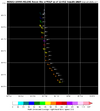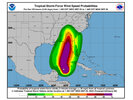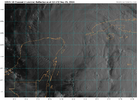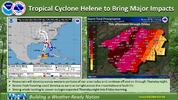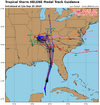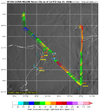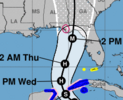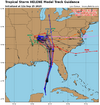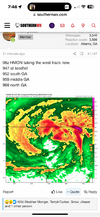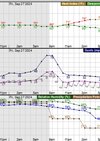NCSNOW
Member
This is Ground Zero-B for major destruction. Ground Zero-A is the coastal Counties at landfall, But SW NC/North Ga Mountains are gonna get their worst hit in my lifetime from a Tropical entity. a Foot plus of Rain over 24 hr period in that terrain will turn catastrophic. There are like 19 peaks in the Smoky Mtns at or above (barely) 6,000 feet.16-20 for the southern escarpment. That’s not good.

